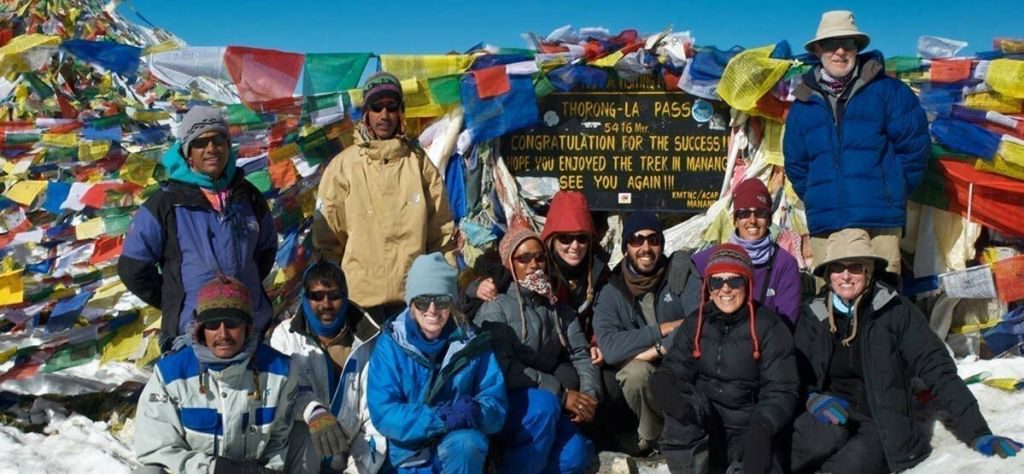
- Chief Guest, Hon’ble Minister Mr. Mahesh Acharya, Ministry of Forest & Soil Conservation.
- Hon’ble Vice Chairman of National Planning Commission,
- Constitution Assembly Members representing mountain regions of Nepal, Hon’ble Former Ministers and Former Parliament Members
- Excellencies of Ambassadors, Diplomatic Corps and Missions
- Respected Secretaries and high officials of Government of Nepal. Presidents and representative of various organizations, Federations, Associations, NGO’s, INGO’s,
- Ladies and Gentlemen,
- Media friends.
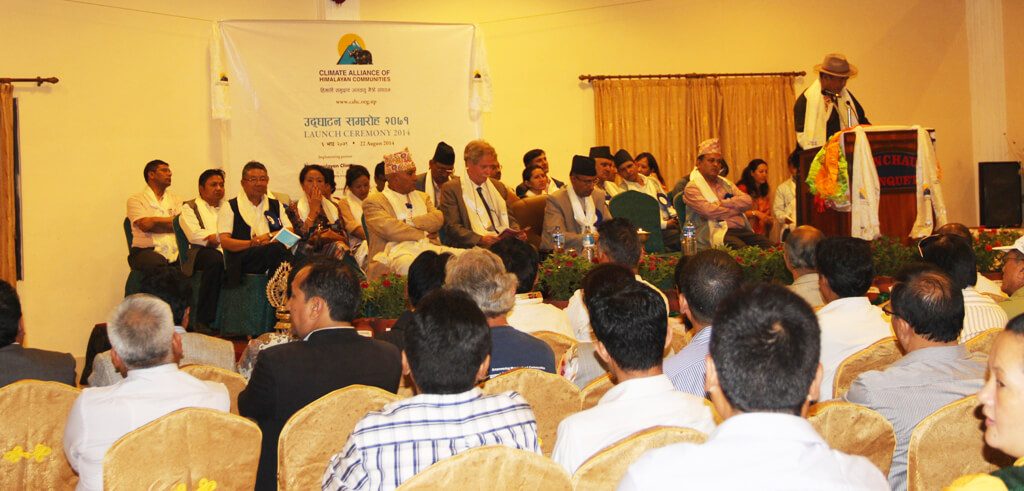
First of all, on behalf of the Climate Alliance of Himalayan Community and myself, I would like to express my sincere gratitude and appreciation to chief guest Hon’ble Minister, dignitaries on the dais and all distinguished guests for your gracious presence here for the launching of Climate Alliance of Himalayan Community.
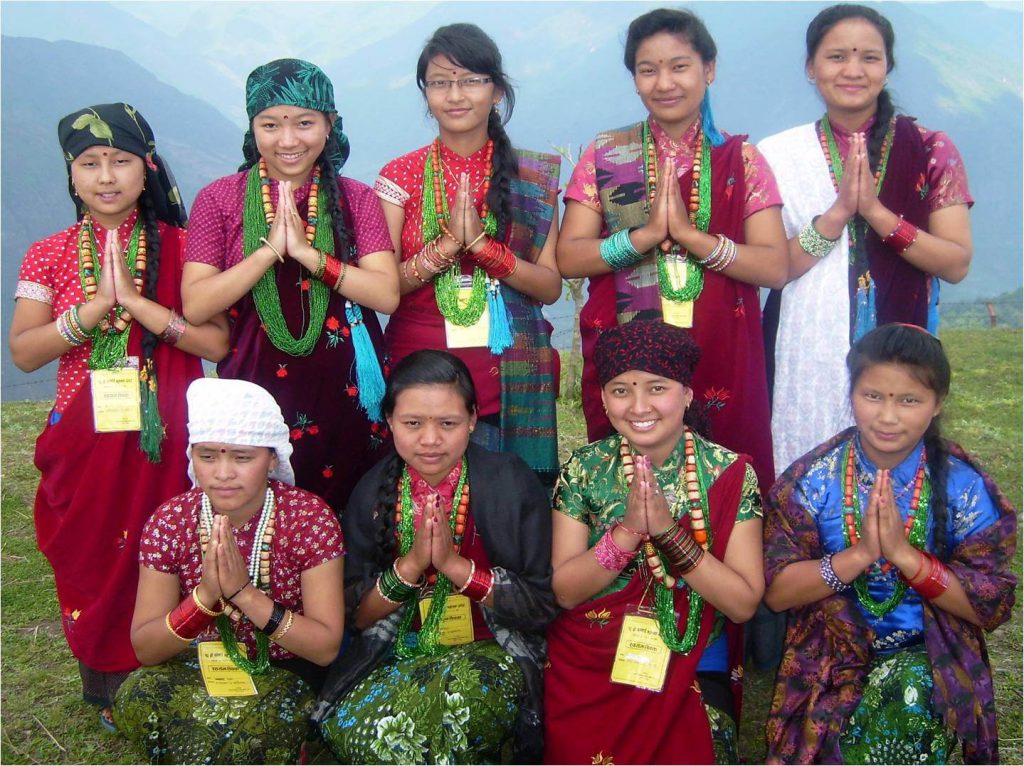
The impacts of climate change are clearly noticeable in the High Himalayan Regions of Nepal, which the members of the Climate Alliance of Himalayan Communities (CACH) call their home. The rise of temperature in the high Himalayan region is double that of the global average temperature rise. Moreover, the movement of the industrial brown clouds from our neighboring countries over our giant mountains is also contributing to the rapid melting of snow and ice
White snow peaks and Himalayan glaciers are melting rapidly and retreating at an unprecedented rate, leaving in their place the highest and most unstable glacial lakes in the world restrained only by fragile moraines. The threat of Glacial Lake Outburst Floods (GLOF) is very real to us and could take place at any time, washing out entire valleys and devastating downstream communities.


It may take decades, or even centuries, to recover from such a vertical tsunami due to the inaccessibility and fragility of the landscape. The development process will also be put in jeopardy as infrastructure such as hydro power plants and roads risk sudden destruction.
We are also seeing changes in the climatic pattern causing severe wind, hail, snow and ice storms, more droughts in some areas, while experiencing more floods in others.
Due to the rise in temperature, local crops are being destroyed by the introduction of new bacteria, insects, birds and mammals, which were not known to the colder hills and mountains in the past, facing food shortage. While at the same time changes to the mountain wildlife habitat, ecology and vulnerability of new diseases, is leading to the extinction of various indigenous flora and fauna.
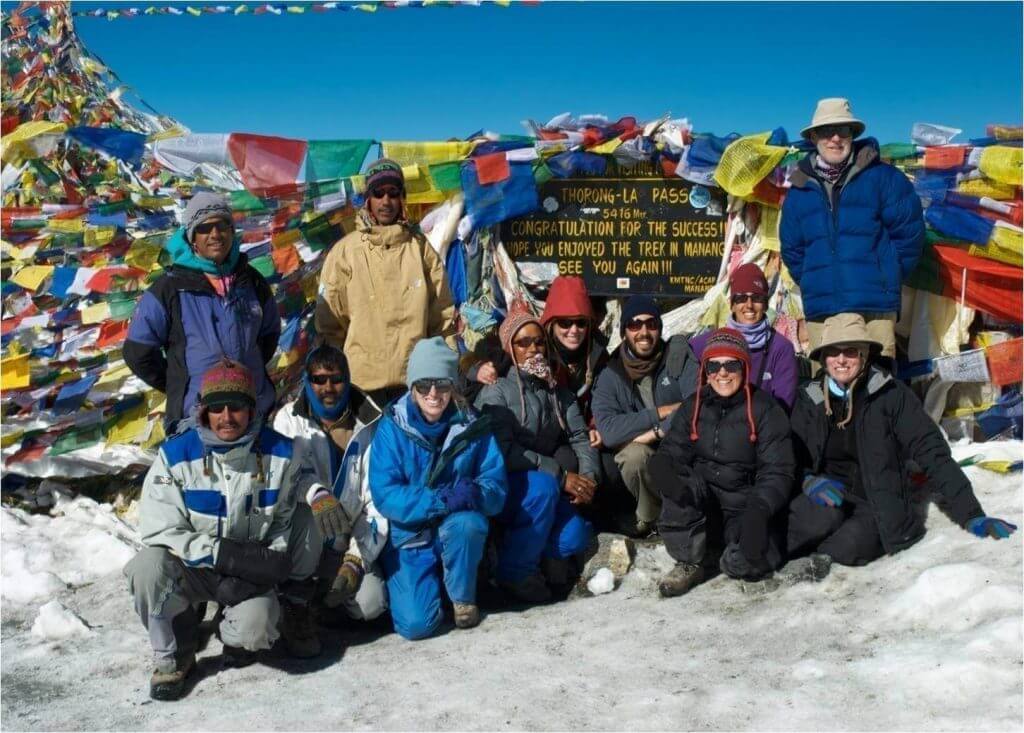
Nepal’s important tourism industry is also under threat as increased temperatures are causing climbing and trekking routes to change. Alarmingly, there is a big increase in the frequency and magnitude of avalanches, serac collapses and rock falls on our climbing peaks. The result of this was clear to see in the tragedy that unfolded on Mt.Everest this year.
But the problem is not just a local issue. Once the snow peaks and glaciers are completely gone, billions of people throughout Asia will lose their vital water sources. I fear to think what kind of catastrophe this could be.
It is important that Himalayan communities come together and advocate for our cause.
The Climate Alliance of Himalayan Communities is such a national civil society led initiative to present the issues from the Himalayas to the world. The alliance comprises of local community leaders and influential representatives from the different sections along the Great Himalayan Trail (GHT).
The members of this community will play active roles in their communities to raise awareness and understanding of climate change through a national, regional and global initiative. This alliance will also play an active role in bringing local issues of Himalayan communities to the forefront of national debate
Our mountains are our heritage, glory, pride and our identity. They are also the future of our nation. The Nepal Himalayas are among the most attractive adventure tourism destinations in the world. Dealing with climate change impact is essential for sustainable tourism development.


The Great Himalayan Trail is described as ” one trail to rule them all” traverse Nepal’s entire mid hills and low mountains
Renowned mountaineer Apa Sherpa ( 21 time Mt.Everest Summiteer ) and Dawa Steven Sherpa (Double Mt. Everest Summiteer and Leader of Eco Everest Expedition organized every year since 2008 with dedication for the protection of the mountain environment) embarked on a 1555 km and 99 days long GHT on 15 January 2012. The event was endorsed by the climate change council, the apex body of Gov. of Nepal headed by Rt.Hon’ble Prime Minister.
GHT-CSCT was organized by Himalayan Climate Initiative in coordination with the Gov. of Nepal, in particular the Ministry of Science, Technology and Environment and Ministry of Culture, Tourism and Civil Aviation with the support from DFID, The British Council, SNV, The North Face, NMA, Asian Trekking and GHTDP partners.
The trek is organized to highlight the impact of climate change and to promote The Great Himalyan Trail the best tourism trail in the world which offers the trekkers to experience extremly rich culture, breathtaking landscapes and diverse range of flora and fauna.
Some of the major highlights:
- The Great Himalaya Trail-Climate Smart Celebrity Trek (GHT-CSCT) traversed some of the most rugged and breathtaking mountain landscapes on earth and passed beneath fourteen of the world’s highest peaks.
- The GHT-CSCT cut through 22 districts in the mid-hills and low mountains of Nepal, many of which have been reported as vulnerable to Climate Change Impact according to the National Adaptation Programmes of Action (NAPA) report.
- GHT-CSCT raised awareness among government representatives, politicians, civil society leaders, private sector, and development partners in Nepal for the vulnerability of impoverished people against the effects of climate change.
- GHT-CSCT established GHT, nationally and internationally, as a sustainable tourism product. It promoted the GHT as the world’s highest long-distance walking trail and Nepal’s newest tourism product among travelers and tourism professionals worldwide and highlighted its pro-poor, sustainable and “climate smart” approach.
- GHT-CSCT established mountain tourism as a “climate friendly” activity, and promote trekking as an eco-friendly and “low-carbon” tourism activity.
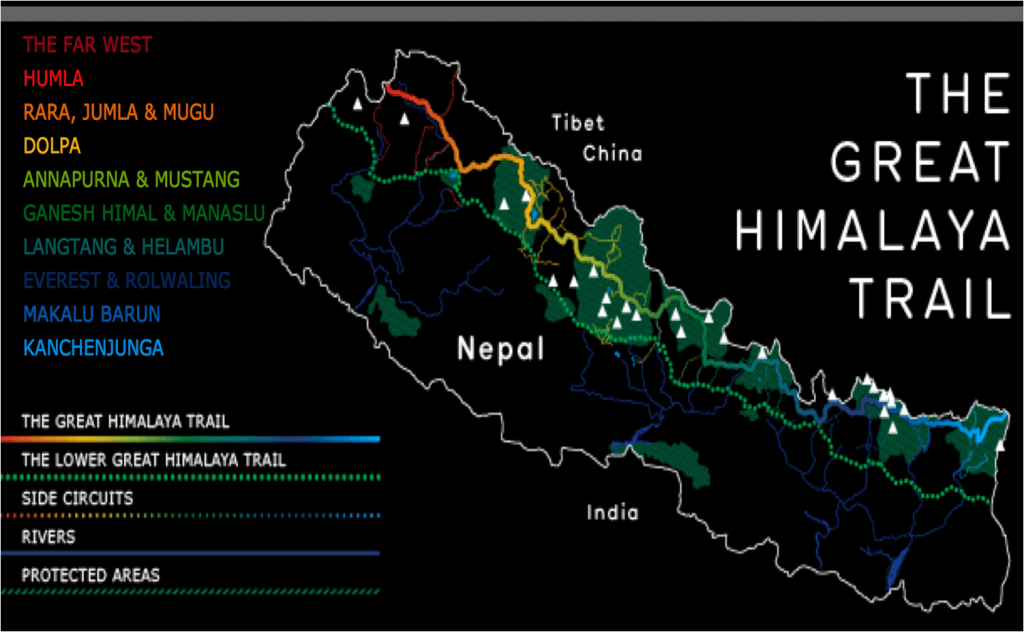
The Great Himalaya Trail network will work towards harnessing tourism with a market-led approach to improve livelihoods and bring sustainable development opportunities to remote and poor communities through the creation of an iconic and globally significant new tourism product for Nepal. The “Great Himalayan Trail” (GHT) is a network of existing paths and trade routes spanning the length of the country from where we the members of the Climate Alliance of Himalayan Communities represented from Darchula in the West to Kanchenjunga in the East package and promote GHT into one of the world’s great walks. Over the longer term, the GHT has the potential to traverse the length of the Himalayan Range stretching through impoverished mountain areas of Pakistan, India and Bhutan.

The Great Himalayan Trail can do wonders for the development of the Himalayan Region in Nepal. If developed in Climate Smart ways, it can also help the mountain communities to confront Climate Change.
Just like one Mount Everest, and its promotion, brought so much development for the people in the Khumbu region; one Annapurna brought so much development for ACAP region, the declaration of GHT as a National Pride Project can do wonderful things for most communities in the Himalayas. It can become a rallying point for all kinds of investors and development agencies to invest in the mountains.
Nepal’s economy has been green since the historic times- thanks to our religions and cultural values. Green still remains our comparative advantage. We can only attain double digit growth by making use of our comparative advantage.
The mountain communities are capable and confident to take their issues at national, regional and global level.


We request all stakeholders including the development agencies operating in Nepal to allow us to represent ourselves in national, regional and global debates and discourse.
In my long experience in the tourism sector I believe that if the Government of Nepal declares the GHT as a National Pride Project and Nepali Economy converted into a Green Economy, it would vastly increase development in the most rural areas across Nepal.
The alliance can play a constructive and cohesive role in the designing of the world’s first Climate Smart-Great Himalayan Trail. With the support of the global community, sustainable development can be taken to hundreds of communities along the GHT that could help to promote growth whilst also increasing resilience of highly vulnerable communities.
Therefore, saving the Himalayas means saving us and our future generations.
So Let’s THINK Sustainably, WORK together and ACT now! What we can do today should not wait for tomorrow to save the Himalayas.
Before concluding my finishing note, I would like to extend my hearty thanks to ICIMOD, HCI, Ministry of Science, Technology and Environment, Government of Nepal, my executive members and staffs for your gracious support and assistance. I hope to receive your continued support and cooperation from all sectors in the days ahead.
On this occasion I have the honor and pleasure to introduce the central executive board members of CAHC.








